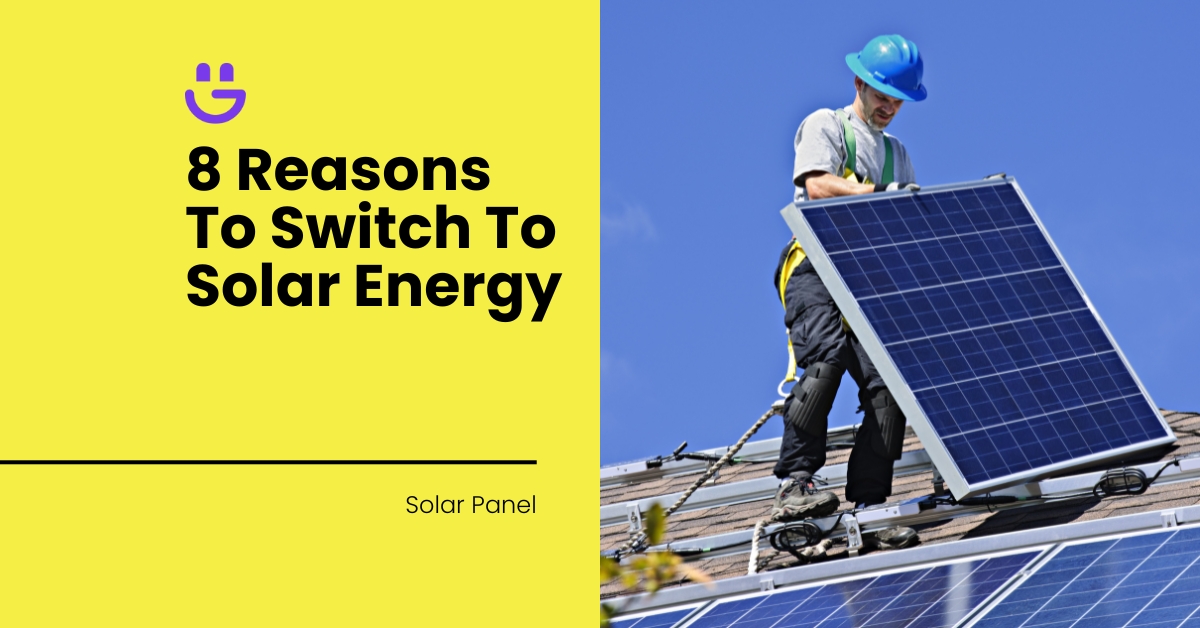Last Updated on November 14, 2025
A good quality 400 W solar panel produces an average of 320 kWh to 400 kWh of electricity per year.
400-watt solar panels are one of the most common solar panel sizes. Understanding how much electricity they produce is crucial when considering a solar panel system.
Contents
Understanding 400 Watt Solar Panel Output
A 400-watt solar PV panel is designed to convert sunlight into electricity with a maximum power output of 400 W under ideal conditions. However, conditions are not always ideal, so actual output is often lower than 400 W. For example, less electricity is produced in winter.
Let’s break down a 400 W panel’s output in more detail:
- Daily production: On average, a 400 W panel in the UK provides between 0.9 kWh to 1.1 kWh of electricity daily. The output could be more on a sunny summer day and well below 0.9 kWh on a dark winter’s day.
- Monthly production: The average monthly generation is 27 kWh to 33 kWh. Similarly, production is high in summer and drops off sharply in the mid-winter months. Energy Savings Trust figures estimate a 75% decline in solar energy generation in mid-winter compared to mid-summer.
- Annual production: Average annual generation is between 320 kWh and 400 kWh. Viewing electricity generation over a year smooths out seasonal variations and provides a clearer picture of overall performance.
How Many 400-Watt Solar Panels Will You Need for Your Property?
To estimate how many solar panels you need, start by asking how much energy you want to generate. Your electricity bills will indicate your monthly and annual energy usage amounts. Bills are stated in kWh (kilowatt hours) which measures the total amount of electricity used over time.
For example:
- Let’s assume your yearly electricity usage is 3,200 kWh.
- The solar energy output of a 400 W panel is at least 320 kWh.
- This suggests you need 10 panels – giving you a 4 kW solar system.
- A 4kW system of residential solar panels is one of the most popular domestic arrangements. It can typically power a two-bed or three-bed home.
The above calculation is somewhat simplified. In reality, you may need more than 10 panels to support higher solar production in winter or because you have a north-facing roof that doesn’t capture sunlight effectively.
What about businesses? A medium-sized business may require over 100 panels to meet its energy demands. This is one of the reasons commercial panels often have a larger output – usually 600 W or more.
What determines how many solar panels you will need?
The main factors determining how many 400 W panels you need include:
- Roof angle: Roofs angled between 30 and 45 degrees capture more sunlight than flat roofs or steeply inclined structures.
- Roof orientation: If your roof faces south, you have the perfect orientation for solar. East and west orientations are also effective but usually require more panels.
- Geographical location: Some parts of the UK enjoy more annual sunshine than others. All else being equal, fewer panels are needed in Plymouth than in Glasgow to deliver the same amount of electricity.
A solar professional can advise on the best and most efficient solar power system for you – including the number of panels. They will also assess if your roof is suitable for solar panels. 400 W panels typically weigh 20-24 kg each, so it’s essential to confirm your roof can safely bear the load.
How Much Electricity Does A 400 kWp Solar Panel Produce?
Kilowatt peak (kWp) or Kilowatt-hours per peak is the maximum output a solar panel can produce under ideal conditions.
Under ideal conditions, a 400 kWp solar panel might produce 400 kWh of solar energy per hour of peak sunlight. However, in the real world, solar panels often fall short of their maximum capability.
What factors affect kilowatt peak?
Solar panels usually don’t perform at kWp in the following conditions:
- Winter weather: Solar energy generated in winter is significantly less than in summer peaks.
- Shading: Panels shaded by trees, buildings, installations, and other obstructions struggle to function to their full potential.
- Dirt and debris: A buildup of dirt and grime can negatively impact a solar panel’s output by over 20%.
- Damage: Panels damaged by falling objects, birds, or other wildlife will likely deliver sub-par generation.
- Angle and position: Panels not positioned or angled optimally towards the sun will produce less electricity.
- Degradation: Solar panels deteriorate over their lifetime. The solar panel efficiency of 20 year-old system may be 20% less than a new array.
- System efficiency: Poor quality panels and an inefficient solar inverter can also compromise output. Be sure to check the reviews and reputations of solar panel manufacturers to find quality products. You can also speak to our Eco Happy team for expert guidance.
Get A Solar Installation Quote Today
Are you ready to install solar panels? The benefits of solar are exciting and numerous. Think lower bills, a reasonable payback period, energy independence, and SEG payments for selling electricity back to the grid. Not to mention, you’ll be contributing to a cleaner planet!
Eco Happy is your go-to expert for solar panel installation in England and throughout the UK. To get your free solar quote, simply complete the short online form. Our friendly team will be in touch promptly. We also provide solar system care and maintenance services.
FAQs
What can I power with a 400-watt solar panel?
With a 400-watt solar panel and sufficient sunlight, you can power various common household appliances and electronics, though not all at once. Some items you can run include televisions, mobile chargers, laptops, gaming consoles, toasters, and fans. However, if you’re considering a smaller setup, you might wonder about the capabilities of a lower wattage system. For instance, a 100-watt solar panel offers a different range of possibilities and is ideal for powering smaller devices and meeting less demanding energy needs.
How much space does a 400-watt solar panel need?
A 400-watt solar panel typically requires about 2 square metres (around 21.5 square feet) of space on a roof or surface.
Can a 400 W solar panel power a house?
One 400 W solar PV panel cannot power a house on its own. On average, a UK household uses about 7 kWh to 10 kWh of electricity per day which requires around seven to 10 400 W panels, depending on the sunlight hours, panel efficiency, and panel positioning.
What is the lifespan of a 400-watt solar panel?
A 400-watt solar panel typically has a lifespan of 25-30 years. Over time, the panel’s efficiency may decrease slightly, but it will still produce electricity for decades, making it a long-term investment.
Final Thoughts
A 400-watt panel is an efficient and popular choice for UK solar installations. A 400 W panel is used in both residential and commercial setups. It produces between 320 kWh and 400 kWh of electricity annually though outputs vary depending on the weather, property orientation, and roof angle.
For a typical UK household, you would need about 10 400-watt solar panels to meet daily energy needs. A medium-sized business may require over 100 of these panels.





Tom Allen
Solar Expert